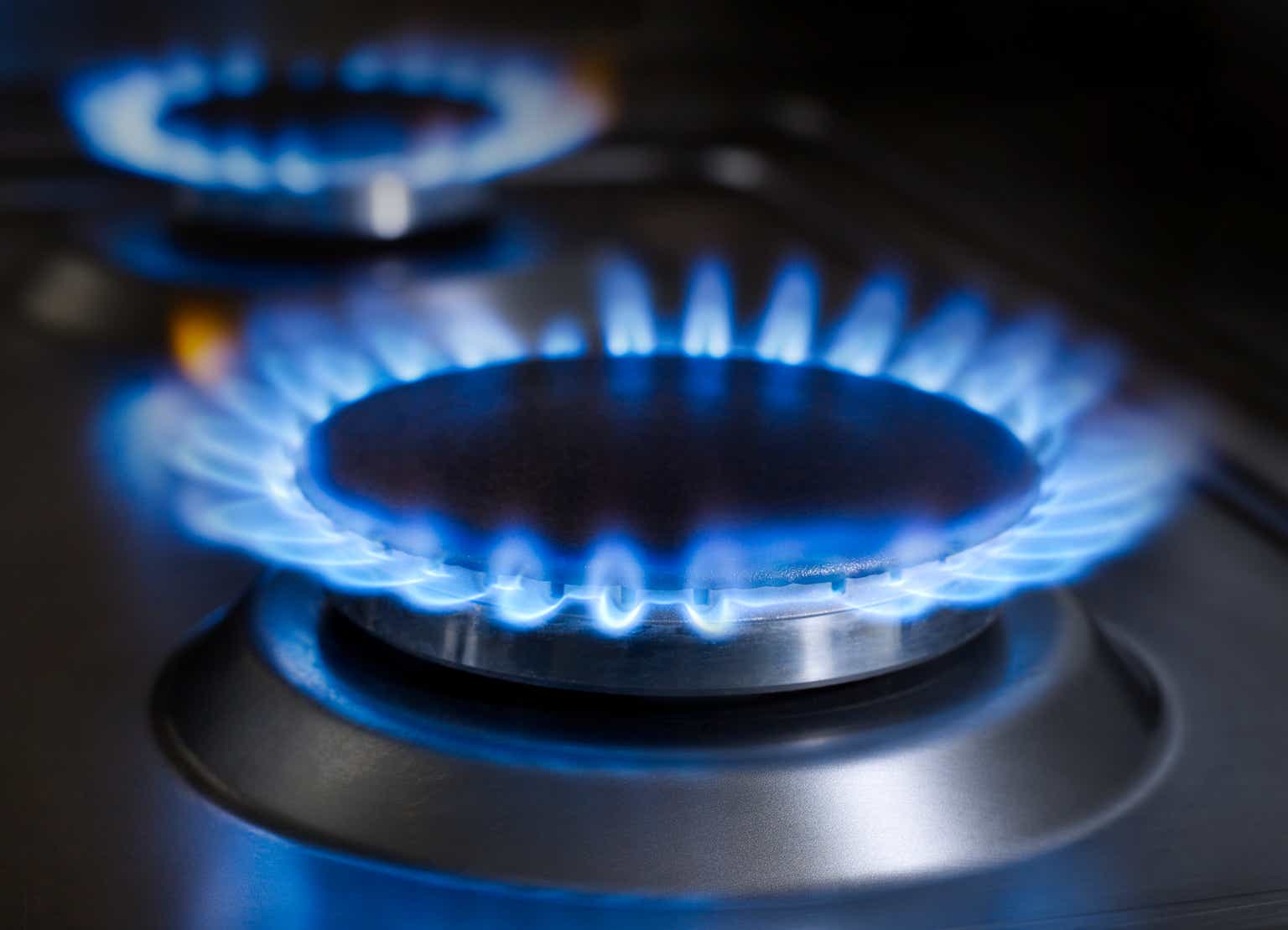Things are starting to look better for the natural gas market, but don’t tell that to any of the natural gas producers because they have materially outperformed spot prices (NG1:COM).
stockchart.com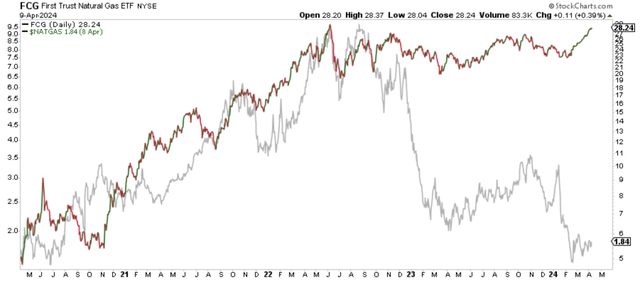
One key reason for the large price differentiation is that the natural gas market is in steep contango.
CME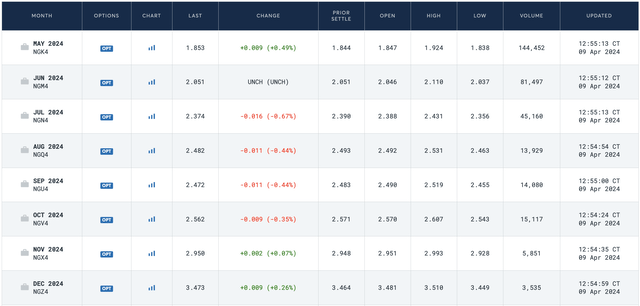
All natural gas producers hedge, and depending on the percentage of hedges, current spot gas prices are not meaningfully impacting cash flow. Don’t get me wrong, when Texas natural gas prices go negative, people feel the pain.
IHS
But thanks to elevated oil and NGL prices, Permian oil producers don’t even consider natural gas as part of the revenue stream.
As for the rest of the natural gas market, lower production has dramatically improved fundamentals.
IHS, HFIR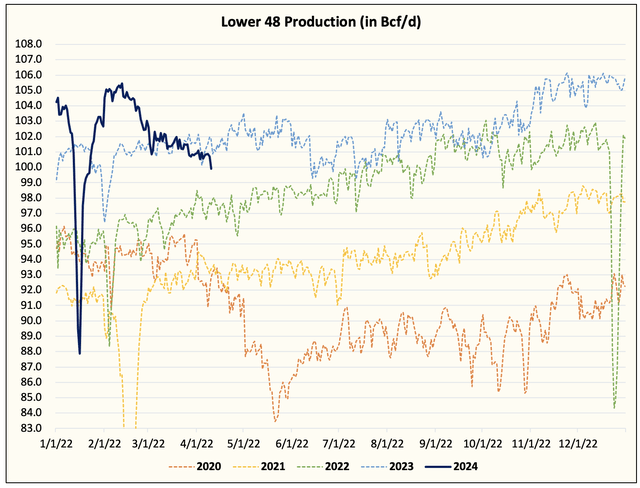
At ~99 to ~100 Bcf/d, we estimate that the natural gas market will be close to ~3 Bcf/d of undersupply by this summer. Keep in mind that we will be exiting the withdrawal season at a sizable surplus to the 5-year average.
EIA, HFIR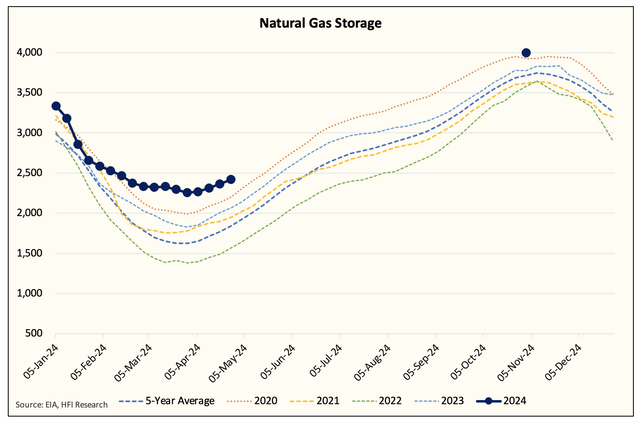
Our preliminary assumption is for natural gas storage to finish at 4 Tcf, but if production continues to trend below ~101 Bcf/d throughout Q2, this estimate will be materially skewed to the downside.
EIA, HFIR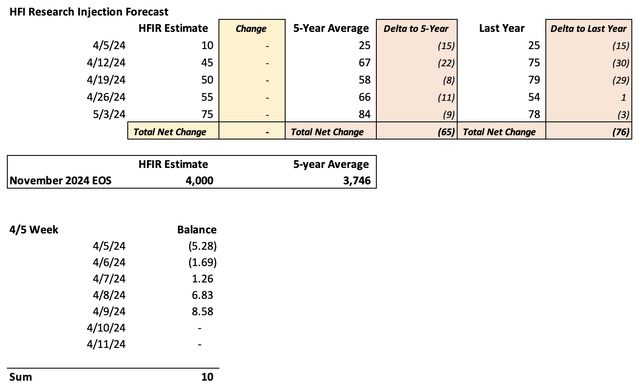
With the injection season starting, there are 31 weeks in the injection season. The typical injection season sees ~2.07 Tcf of gas. Assuming no deficit or surplus, natural gas storage would finish injection season over ~4.3 Tcf. But because we are seeing the hefty drop in production, these are the scenarios we see:
- ~99 Bcf/d average, -3.5 Bcf/d deficit = 1.31 Tcf of total injection or 3.58 Tcf in storage by November
- ~100 Bcf/d average, -2.5 Bcf/d deficit = 1.528 Tcf of total injection or 3.797 Tcf in storage by November
- ~101 Bcf/d average, -1.5 Bcf/d deficit = 1.745 Tcf of total injection or 4.014 Tcf in storage by November.
As you can see, at the current production level, there’s a pathway to a deficit storage scenario by November, but we highly doubt this will be the case. Like all things in the natural gas market, the price and weather will play determining roles in the trajectory of storage. There’s a very good chance this summer will be warmer than normal, which will boost power burn demand. We are currently modeling in +1.5 Bcf/d y-o-y in power burn.
This means that Lower 48 gas production can reach ~102.5 Bcf/d average and still maintain the -1.5 Bcf/d deficit. In addition, a lot of the natural gas producers are only temporarily reducing production amidst the incoming shoulder season. Due to the low demand nature, producers that don’t hold back production will be willingly selling into a weak gas market. Curtailing production for when prices are higher makes the most economic sense.
As a result, we expect Lower 48 gas production to gradually pick up into year-end, with production returning to ~104 Bcf/d by November.
Timeframe?
It all depends on producer discipline. If natural gas producers reject increasing production at ~$2.3/MMBtu gas, then there’s visibility for the gas market to reach $4+ this coming winter. For example, if this summer proves to be warmer than normal and producers keep production around ~101 Bcf/d, it would theoretically result in a -3 Bcf/d deficit market.
By our estimate, this would eliminate an additional 200 to 300 Bcf in injection. This would push storage from the 4 Tcf we currently estimate down to 3.7 Tcf. This would then materially accelerate the rebalancing process, and natural gas prices would be skewed to the upside.
The issue, however, is that no one knows just when production will start to increase again. On the shale oil side, the H2 capex bump will see an increase in associated gas production, so even if US shale gas players remain disciplined, the shale oil boys will ruin the party.
Putting it all together, we see a path to normality back to a normalized storage scenario by year-end, but it will require time and more discipline from producers. This means that natural gas prices will have to remain low to force the discipline and with the futures curve already in steep contango, there’s limited upside for now.
The rebalancing is coming, but it will take time.
Read the full article here





